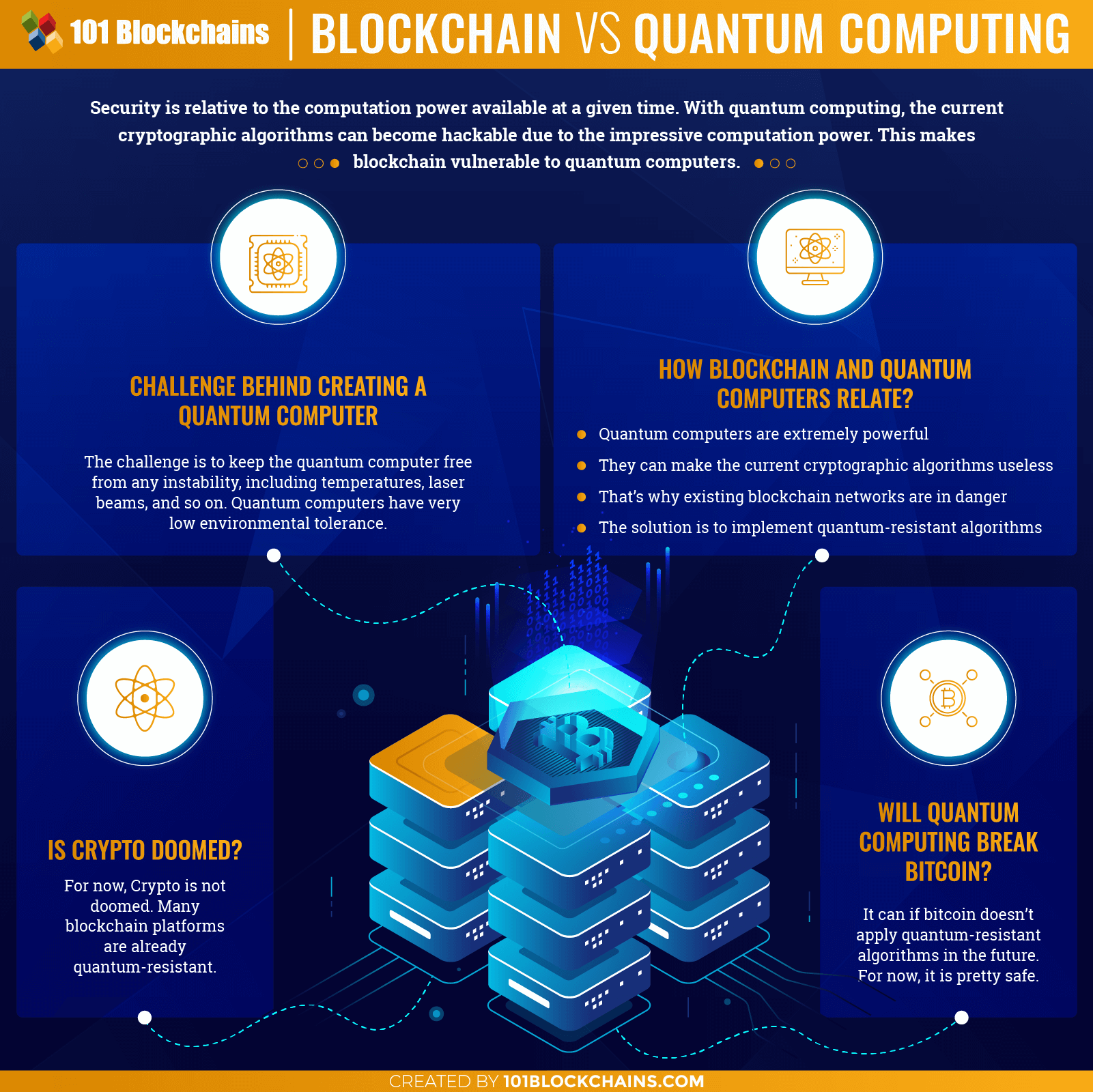The interplay between blockchain technology and quantum computing has ignited a vigorous debate within the technological community, as both domains threaten to either revolutionize or destabilize existing paradigms. This examination delves into what the emergence of quantum computing means for blockchain and cryptocurrency, analyzing vulnerabilities and opportunities.
First, it is essential to understand the foundational principles guiding both blockchain and quantum computing. Blockchain operates on a decentralized ledger system, enabling transparent record-keeping, secure transactions, and tamper-proof historical data. Security is underscored by cryptographic algorithms, such as SHA-256 for Bitcoin, safeguarding every transaction’s integrity. However, as the landscape of technology evolves, so too do the threats looming over this seemingly robust system.
Quantum computing, a paradigm that leverages the principles of quantum mechanics, significantly enhances computational power. Traditional computers process information in bits as either 0s or 1s. In contrast, quantum computers utilize qubits, which can represent multiple states simultaneously. This exponential increase in processing ability poses a potential risk to various encryption and security protocols that underpin the security of blockchain technology.
The core concern arises from the capability of quantum computers to execute Shor’s algorithm, a quantum algorithm that can factor large integers exponentially faster than the best-known classical algorithms. This vulnerability is particularly problematic for blockchain, where public-key cryptography is paramount. For instance, Bitcoin’s security relies on the difficulty of factoring large prime numbers. If sufficiently powerful quantum computers become operational, they could potentially truncate this security edge, allowing malicious actors to derive private keys from public addresses with alarming ease.
Yet, the impending quantum threat must not be misconstrued as an immediate obliteration of blockchain’s relevance. It is crucial to recognize that quantum computing is still in its nascent stage, with practical, large-scale quantum machines not yet realized. Additionally, the transition to a quantum-safe infrastructure is underway, with researchers and developers working tirelessly to create quantum-resistant algorithms capable of withstanding quantum attacks.
Possible defenses against the quantum menace include post-quantum cryptographic algorithms, which are specifically designed to be resilient against quantum computations. The advent of Quantum Key Distribution (QKD) also presents a robust solution, enabling secure communication channels that employ the principles of quantum mechanics to ensure absolute security. These technologies underscore a pivotal shift in how cryptographic measures may evolve, potentially enhancing blockchain security rather than undermining it.
However, the conversation surrounding blockchain’s longevity in a quantum computing future is not solely about risk mitigation. The convergence of these two technologies could lead to innovative applications that redefine our understanding of secure transactions. For instance, integrating blockchain with quantum computing could facilitate dynamic and instantaneous verification processes, enhancing the efficiency of transactions in a decentralized network. This symbiotic relationship may well foster a new category of cryptocurrencies and decentralized applications that harness the computational prowess of quantum machines.
Moreover, the meticulous examination of these technologies can lead to enhanced understanding and strategic foresight. Organizations engaged in cryptocurrency and blockchain technology would benefit from actively investing in quantum research and the development of quantum-resistant frameworks. Establishing a proactive posture allows entities to stay ahead of the curve and ensures they are not caught unprepared by the advancements in quantum technologies.
The dialogue about blockchain versus quantum computing fosters an essential discourse about the future of digital assets, privacy, and security. As sectors from finance to healthcare adopt blockchain technology, understanding its prospective vulnerability to quantum threats is paramount. However, fostering curiosity about potential synergies between the two technologies can excite innovation rather than incite fear.
In conclusion, while the advent of quantum computing does introduce a layer of complexity to the sustainability of blockchain technology, declaring an existential risk would be premature. Developments in quantum cryptography and resilience in the face of quantum threats evoke a scenario replete with possibilities rather than pitfalls. As the landscape shifts irreversibly, stakeholder awareness and adaptability will be the cornerstones of navigating this transformative era. Staying informed and prepared will not only shield existing cryptocurrencies from potential quantum threats but may also unlock new dimensions of security and efficiency, ultimately shaping a hybrid future where blockchain and quantum computing coexist harmoniously.









Leave a Comment